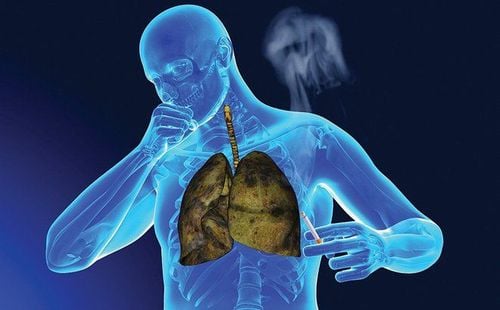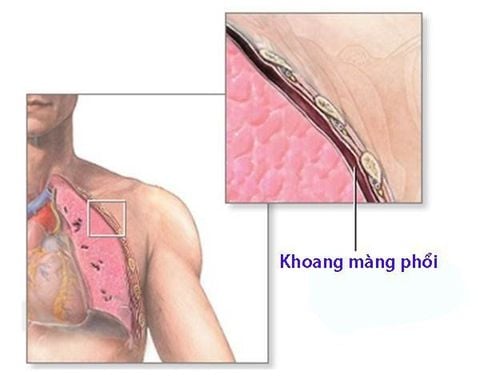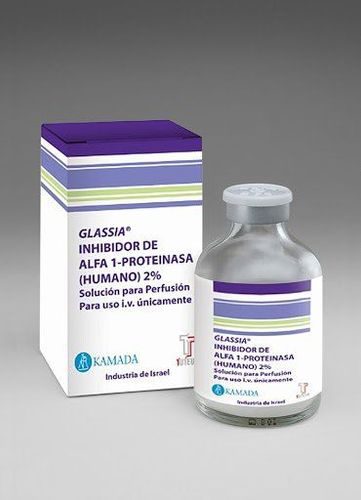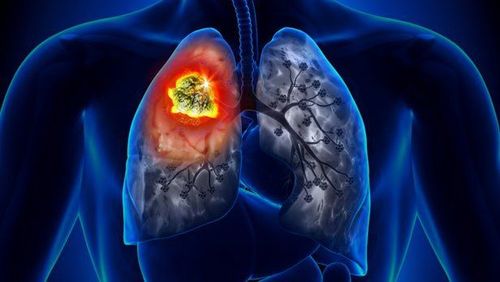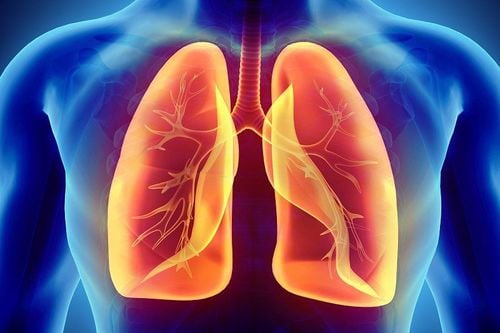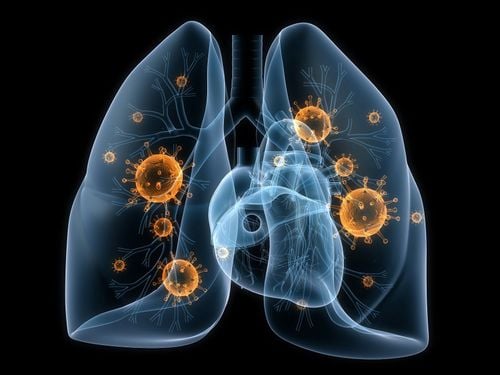This is an automatically translated article.
Pleural deposits are a consequence of empyema that is not actively treated in the early stages. If left untreated, pleural deposits will cause many complications that seriously affect the patient's health.
1. What is pleural deposits?
Empyema is the accumulation of pus in the pleural cavity. The disease can occur after infectious diseases in the pleura, lungs, mediastinum, abdominal cavity, sepsis, ... or occurs after trauma, chest wounds. If not treated thoroughly in the early stages, empyema will progress to chronic, forming pleural deposits.
Pleural deposits are pus-filled spaces with thick and solid walls on the pleural surface, sometimes up to 2-3cm thick. On X-ray images, the deposits are usually located in the lower and posterior regions of the pleural space, and water vapor can be seen in the sedimentary space.

Chụp X-quang giúp chẩn đoán bệnh ổ cặn màng phổi
2. Complications of pleural deposits?
Pleural deposits if not treated will cause complications that seriously affect the patient's health. Patients are exhausted due to infection, prolonged intoxication, risk of sepsis, causing abscesses in other organs such as brain, kidney,... The process of fibrosis creates fibrous bands (to create membrane deposits). lung) spreads into the lung parenchyma, causing the lung parenchyma's ability to expand, reducing respiratory function. The patient is at risk for heart failure, primarily right-sided heart failure.
3. Pleural peel surgery to treat pleural deposits
To avoid complications of the disease, most cases of pleural deposits require early intervention with pleural peel surgery. For patients with pleural deposits who are having other diseases such as: infection in other organs, severe chronic disease or severe damage to the opposite lung, ... need stable medical treatment first. during surgery.
3.1. Preparation steps before pleural peel surgery to treat pleural deposits
Medical staff will explain to the patient and family the purpose of surgery, possible complications and sequelae. If consenting to surgery, the patient or family member must sign the consent form to complete the legal procedures. Strengthening fostering, improving physical condition, balancing anxiety disorders for patients suffering from exhaustion and chronic diseases. Blood transfusion for patients with severe anemia. Patients fasted for 8-12 hours before surgery. Before the surgery, the medical staff will clean the surgical area and the whole body. Use prophylactic antibiotics for the patient if necessary.
3.2. The surgical procedure of pleural peel to treat pleural deposits
The patient lies on the operating table, lying on a 90-degree side to the opposite side, with a pillow across the chest. The surgical team performed double-lumen endotracheal anesthesia, placed central and peripheral intravenous lines, gave the patient oxygen, and placed a urinary catheter. Electrocardiogram and SpO2 parameters are continuously monitored through the monitor.
The surgeon opens the thoracic posteriorly through the V intercostal space into the pleural space. The surgical steps include:
Using an electric knife to perform surgery to remove the maximum adhesion of the lung to access the pleural deposits. Sew up the bleeding parts of the large lung parenchyma. Wash the pleura and pleural space, especially at sites of deposits. Send sediment specimen for histopathological and bacteriological examination. In case the pleura is thickened due to a long-term accumulation of pleural deposits, the surface of the lung parenchyma is covered with a thick layer of organized snow silk, the doctor will peel off these layers as much as possible to help the lungs expand. After removing the organized fibrin layer, pour sterile serum into the pleural space and inflate the lung to check for air leaks. If air passes through the parenchymal surface of the lung, sutures are required. Hemostasis, thoracic irrigation, pleural lavage, drainage in the pleural space, continuous suction drainage after placement to prevent occlusion due to blood clots. Close the chest after the lungs have fully expanded.
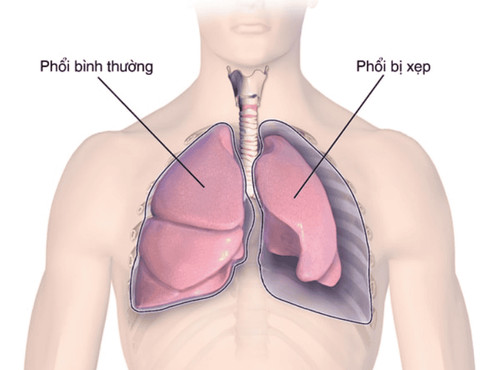
Sau phẫu thuật có thể ra một số tai biến như xẹp phổi
4. Complications after pleural peel surgery
Common complications after pleural peel surgery to treat pleural deposits are postoperative bleeding and postoperative atelectasis. If postoperative bleeding >100ml/hr with hemodynamic disturbances or bleeding >200ml/hour for 3 consecutive hours, the patient will be re-operated for emergency hemostasis.
Postoperative atelectasis is a condition in which the patient is not breathing well and sputum is blocked after surgery. To overcome this situation, the patient needs to get up early, perform vibrating and coughing up sputum. In addition, the patient will be given pain medication, systemic antibiotics and bronchoscopy if needed.
To register for examination and treatment at Vinmec International General Hospital, you can contact Vinmec Health System nationwide, or register online HERE.




